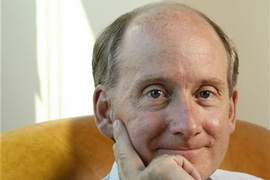Advance transforms stem cell debate
New techniques could end the need to use cells harvested from live embryos.

 |
| Skin cells are treated with genes to become stem cells [AFP] |
A new technique to produce stem cells could end the need to use human embryos, according to new scientific research.
Two teams working independently in Japan and the US have found a way to turn mature human cells back into stem cells in the laboratory.
Keep reading
list of 4 itemsHong Kong’s first monkey virus case – what do we know about the B virus?
Why will low birthrate in Europe trigger ‘Staggering social change’?
The Max Planck Society must end its unconditional support for Israel
Scientists believe that research on this material could produce cures for many diseases and allow human organs to be grown artificially for transplant.
The issue has been at the centre of an intense ethical debate because until now, stem cells can only be collected from viable human embryos, which are destroyed in the process.
Stem cells are important because they can be turned into any other kind of tissue, which makes them useful for drug and medical research.
The new technique involves taking skin cells, treating them with four genes and forcing them to regress to their original embryonic state, effectively wiping their memory.
“We weren’t avoiding the ethical controversy, we just thought this was an alternative approach that would work quicker,” said James Thomson of the University of Wisconsin, who led the US team.
The researchers say it may be several years before the technique can be used practically to treat people, although it could be used immediately to screen drugs and study diseases.
“We have to be sure the cells are safe,” said Shinya Yamanaka of Kyoto University in Japan.
Yamanka and colleagues reported their findings in the journal Cell, while Thomson’s team published their results in another journal, Science.
“This is truly the Holy Grail, to be able to take a few cells from a patient, say a cheek swab or a few skin cells, and turn them into stem cells,” said Dr Robert Lanza of Advanced Cell Technology, a biotechnology company working in the same field.
Genetic reprogramming
| he biological equivalent of the Wright brothers’ first aeroplane. |
Scientists hope that in the future, stem cells could be converted into heart, nerve or other tissue which could be transplanted into patients to treat diabetes, Parkinson’s disease, spinal injuries or other conditions.
The other advantage of this process is that because the stem cells are taken from the patient’s own mature cells, it has the same genetic make-up, making rejection by the immune system unlikely.
To achieve this with existing techniques would involve cloning as well, making it even more controversial.
“It is relatively easy to grow an entire plant from a small cutting, something that seems inconceivable in humans,” said Azim Surani of Cambridge University in Britain.
“Yet this study beings us tantalisingly close to using skin cells to grow many different types of human tissues.”
Political response
George Bush, the US president, has twice vetoed attempts to grant federal funding of stem cell research, while some Republicans have tried to ban it completely.
“The president believes medical problems can be solved without compromising either the high aims of science or the sanctity of human life,” said a White House statement.
The field has also been condemned by the Roman Catholic church and the pope recently endorsed using adult stem cells as an ethical alternative.
“It’s a win for science and for ethics,” said Richard Doerflinger of the US Conference of Catholic Bishops, “I think this is a wonderful advance for basic research in stem cells and maybe some day for regenerative medicine.”
Cells produced using the new technique would be eligible for US federal funding without the need for new legislation, but some believe the new discovery will make it harder to fight opponents of this work.
“It’s going to fuel those who call for preferential federal funding for non-embryonic stem cell research,” said Alta Charo, a professor of law and bioethics at the University of Wisconsin.
“No matter how well this new technique can be used … calls for criminalisation or wholesale de-funding of embryonic and cloning research are not warranted,” she said.
Early results
Scientists support that and say that despite the breakthrough, it is still early days, and while the new cells appear identical to their counterparts from embryos, researchers do not know if they will respond in the same way.
“This new research is just the beginning; we hardly understand how these cells work,” said Thomson, “It is not the time to abandon stem cell research.”
 |
| James Thomson says “the beginning of the end of the controversy” [AFP] |
“Even though we have this new source of cells, it doesn’t solve the downstream problem of getting them into the body and functioning,” he said.
The researchers also believe that this announcement will stimulate more work, as a lack of funding and the political controversy have detered many scientists from entering the field.
“I believe that these new results, while they don’t end that controversy, are the beginning of the end of the controversy,” Thomson said.
While the first step may be to use these new cells to grow tissues for transplant, other scientists are already suggesting more ambitious treatments, such as growing whole organs.
“From a heart cell we don’t have to go back to an embryonic stem cell,” said Dr John Gearheart, a stem cell expert at Johns Hopkins University in Baltimore.
“If we knew the right combination of things … we could be instructing our own cells to get them to do what we want them to do.
“This work represents a tremendous scientific milestone,” said Dr Lanza, “the biological equivalent of the Wright brothers’ first aeroplane.”